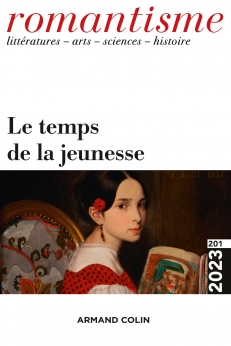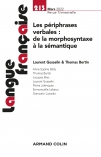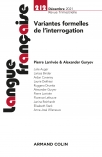
Romantisme N°201 (3/2023)
Pour acheter ce numéro, contactez-nous
Recevez les numéros de l'année en cours et accédez à l'intégralité des articles en ligne.
La postérité de Gavroche a fait du gamin de Paris une métonymie de l’insurrection tout autant que de la gouaille et de l’impertinence. Cette constance de la jeunesse des barricades, mythifiée par l’imagerie, est à la fois indissociable et étrangère aux générations romantiques des artistes et étudiants. Se développe alors toute une iconographie campant une enfance dont la révolte, l’errance de rue ou l’autonomie illustre tout à la fois les inégalités sociales et l’incompréhension du monde des adultes. À l’instar de l’enfant abandonné des romans-feuilletons, le « gamin de Paris » demeure éternellement investi de valeurs positives, à l’intersection de la nuance « canaille » et du « populaire ». C’est la profusion de ces motifs que le texte aborde, en évoquant tout d’abord les héritiers de Gavroche croqués par le dessin d’humour, puis la vision satirique de l’enfance à travers l’univers périodique imprimé.
Gavroche’s posterity transformed the Parisian "gamin" into a metonymy for insurrection as well as for cheek and insolence. This constancy regarding the youth of the barricades, transformed into myth by its iconography, is both inseparable from and foreign to the Romantic generations of artists and students. The period saw the development of an entire iconography devoted to picturing children whose rebelliousness, street savviness, or autonomy illustrate social inequality as much as lack of understanding on the part of the adult world. As does the abandoned child of the instalment novels, the "Paris gamin" remains eternally invested with positive values, at the intersection of the rogues and the people. It is this profusion of motifs that this paper focuses on, first invoking the heirs of Gavroche as represented in humorous drawings, then the satirical vision of childhood as depicted in the world of printed periodicals.

